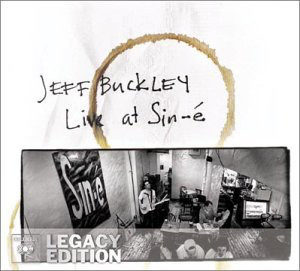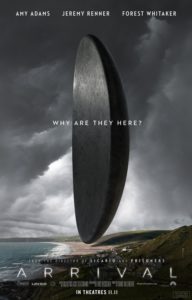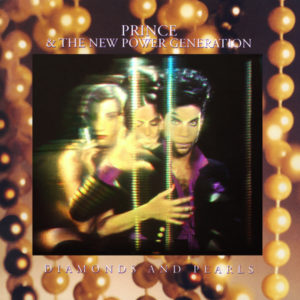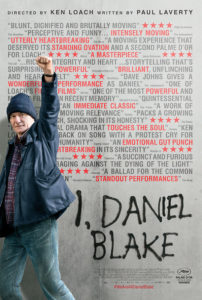Link to an article by Jeanne Willette:
Month: June 2017
Paul Street – Twelve Blasphemous Thoughts
Link to an article by Paul Street:
Jeff Buckley – Live at Sin-é: Legacy Edition
Jeff Buckley – Live at Sin-é: Legacy Edition Legacy C2K 89202 (2003)
Before landing a major-label record deal, Jeff Buckley spent time doing gigs at coffee shops and other mostly small venues in New York’s lower east side. He referred to these as his “cafe days”. After inking that contract, the label recorded him (in hi fidelity) live in July and August 1993 at one of his favorite “cafe days” venues: Sin-é (a Gaelic phrase pronounced “shin-aye”). The venue was tiny. As pictured on the album cover, Buckley was basically set up in a corner, without any kind of stage riser, so close to the audience that he might hit somebody with his guitar neck if not careful. Originally released as a four-song EP in late 1993, a little less than a year before his full-length studio debut album Grace, this was kind of a tribute document to an important phase of Buckley’s career that was coming to an end, as well as a teaser to drum up interest in what was to come. In 2003, an expanded “Legacy Edition” was posthumously released, featuring two full CDs and a short DVD (only some of the DVD content is from Sin-é, though, recorded in 1996).
The performances are as intimate as the venue. This is just Buckley, alone, playing electric guitar and singing. His performances have all the wistful romanticism that would make him a cult star in the coming years — before his untimely death by drowning at age 30. In the Legacy Edition liner notes (all quite well-composed and informative, incidentally), Mitchell Cohen calls Buckley’s approach a “daredevil’s cabaret”. It is precisely the right term. Buckley has a very earnest — almost naïve — ambition that totally undermines what would otherwise be called pretension. Yet he still puts himself in the spotlight and strives for recognition. He is going for a kind of intuitive and personal bohemian ethos that, above all, is driven by emotion. But he relies on a curious kind of pensive and introverted feeling, looking as much to the future and its possibilities as it does the vagaries of the immediate present. It may not be the sort of thing that appeals to everyone, but Buckley’s fans tend to find his style uniquely appealing.
Buckley’s music cut against the commercial trends of the day. At a time when morose and almost nihilistic rock, with “raw” vocals, was dominant — think “Grunge” rock acts like Nirvana — Buckley was instead developing a repertoire that looked backwards to pop, folk, blues and religious music of the by-gone past, combined with his own songs that leaned on urbanized, mystical pop blues. He also sang with a decidedly “traditional pop” style of vibrato, like old time bel canto singing derived from opera (epitomized by Édith Piaf, etc.). While there are a few popular singers who have used substantial vibrato in the rock era, like Bryan Ferry of Roxy Music, Joan Baez, and Jeff’s biological father Tim Buckley, it was increasingly rare. It gives the music its own incongruous sophistication.
All of the best songs from Grace are here. That includes a performance of John Cale‘s compact arrangement of Leonard Cohen‘s “Hallelujah,” which became Buckley’s signature song. Quite surprisingly, even as solo performances the arrangements are basically the same as on the later studio recordings. But in place of the slightly ill-fitting clinical professionalism of the studio band, there is the more immediate charm in Buckley’s do-it-yourself one man performance. As another reviewer astutely put it, “The performances range from amazing to alright and everything in between. The flaws only make it more endearing, though.”
As to the Legacy Edition, disc one is the better of the two. Though both have much to offer. Buckley wears his influences on his sleeve. There are choice covers. The second disc slows a bit, due to between-song narratives that seem to go on longer, and a few of the less successful performances are more grating. Buckley declares himself an unabashed Nusrat Fateh Ali Khan superfan, but his performance of “Yeh jo halka halka saroor hai” induces cringes. It proves — should such proof be necessary — that Buckley knew Kahn songs by heart, but his voice just isn’t up to the task of qawwali devotional singing. But for every moment like that, there are two or three like “I Shall Be Released” and “Be My Husband,” where Buckley gives his own memorable take on an iconic song.
In an interview on the DVD, Buckley suggests that he has much more and better things on the way. Yet, really, Live at Sin-é: Legacy Edition is already Buckley at his best — not his most polished, but his best. Here he is willing to try things that he is not certain will work. There is a tentative — and, if you will, “contingent” — quality to this that is absent on his studio recordings. Those qualities end up being bigger assets than the polish and precision of the later studio recordings (even if Gary Lucas does add intriguing guitar work in places on Grace).
There is much to like about Live at Sin-é: Legacy Edition. Listeners can admire Buckley’s efforts to succeed through hard work and determination. They can appreciate his efforts to find continuity with the past while also looking to grow and evolve. There is also his impish charm and convincing emoting. And the song selection is hard to argue with. Any which way, this collection remains a valuable document of some of the best of what was musically possible in one particular place and time.
Michael Parenti – Quotations
Link to a list of quotations by Michael Parenti:
Arrival
Arrival (2016)
Paramount Pictures
Director: Denis Villeneuve
Main Cast: Amy Adams, Jeremy Renner, Forest Whitaker
This sci-fi film has roughly the feel of Contact (1997), with a bit of The Tree of Life (2011) thrown in for good measure. Credit goes to the many members of the crew who make this a marvel of technical skill. But the script falls apart in confusion as the film goes on. The central story line involves the arrival of extra-terrestrials to Earth, and the attempts of humans to communicate with the aliens. The protagonist is Dr. Louise Banks (Adams), a linguist brought in by the U.S. military. A central plot point involves invocation of the Sapir-Whorf hypothesis, a real-life theory that is stretched to absurd lengths in the film. This is precisely where the film fails. Rather than the grand tradition of using sci-fi scenarios to open space to discuss wholly realistic human social concerns otherwise barred from “respectable” discourse, Arrival reverts to empty deployment of “magical” actions. Actually, from the beginning to roughly the middle of the film, it seems almost that it will be about something that was in Stanisław Lem’s classic sci-fi novel Solaris that was excised from every film version — that humans are unable to comprehend “otherness” (explicitly that of aliens, but implicitly of other humans). But that would seem to be beyond what Hollywood permits, so by the end the plot gets dumbed down to pointless time-travel drivel.
Honest Accounts 2017: How the World Profits from Africa’s Wealth
Link to a report by Global Justice Now:
“Honest Accounts 2017: How the World Profits from Africa’s Wealth”
Prince & The New Power Generation – Diamonds and Pearls
Prince & The New Power Generation – Diamonds and Pearls Paisley Park 9 25379-2 (1991)
While Prince had already demonstrated in the 1980s that his music could be self-indulgent, in the 1990s he also demonstrated an unfortunate willingness to pander. Diamonds and Pearls is one of the biggest duds in Prince’s catalog. It opens with a few faux-street-tough songs in the same mold as Michael Jackson‘s Dangerous (released a couple months later). While not particularly memorable, they are at least listenable. Then there is the hit title track, a sappy ballad that is quite mediocre. But then, a bright spot. “Cream” is Prince in his prime, a sleek: funky R&B song with all the ribald themes listeners expect from the man. But from there the album drops off considerably. The rest ranges from the bad to the cringe-worthy. Prince is trying to fit himself (and his band) into some kind of mold of appearing tough yet vulnerable, seemingly aiming for praise for “triangulating” what the public wants. In hindsight, it comes across as an unconvincing and contrived act. In the late 1990s Prince famously said in an interview (in which he talked about jumping off pianos) that his career was about the music not about money or the trappings of fame. Listeners might well question whether that statement held true around 1991 though — or at other times in his career too. For instance, Prince’s first producer Chris Moon later claimed that Prince was mostly interested in fame when he first entered the music business.
Listeners can safely pass on Diamonds and Pearls and merely pick up “Cream” on a compilation.
Paul Street – Obama: a Hollow Man Filled With Ruling Class Ideas
Link to a book review by Paul Street of David Garrow‘s Rising Star: The Making of Barack Obama (2017):
“Obama: a Hollow Man Filled With Ruling Class Ideas”
The bits about not citing Street’s own books sound a bit like “sour grapes”. Anyway, by way of contrast, try liberal historian Christopher Read‘s biography Lenin!
I, Daniel Blake
I, Daniel Blake (2016)
Canal+
Director: Ken Loach
Main Cast: Dave Johns, Hayley Squires
One of the best “straight narrative” films I’ve seen in a while — reminiscent in some ways of Mathieu Kassovitz‘s La Haine [Hate] (1995). Basically, the premise of the film comes from Frances Fox Piven and Richard Cloward‘s theory about social welfare programs being about politically “regulating the poor” rather than solving the problems that create poverty. (It is a modern twist on something that people have written about for a long time). In that respect, the film is meant to convey how the politicians who intentionally — though never explicitly, that is, they never openly admit as much — seek to implement policies that are ultimately cruel to the poor and trap them in extreme poverty have “blood on their hands”. At the extreme end of that spectrum, historically, would be the imperialist British policies in India during the late Victorian era, in which British support for native Indians was at levels less than what the Nazis gave to concentration camp prisoners during WWII (!). While the film’s narrative is pared back from all the complexities of the real world, notably racial animosities used to prevent the kinds of solidarity repeatedly shown in the film, there is nothing far-fetched in the story. The concision is understandable for a film meant to be accessible.
The most blunt premise of the film is unabashedly political: “Does the masses’ struggle for emancipation pose a threat to civilization as such, since civilization can thrive only in a hierarchical social order? Or is it that the ruling class is a parasite threatening to drag society into self-destruction, so that the only alternative to socialism is barbarism?” Slavoj Žižek, Afterword to Revolution at the Gates: Selected Writings of Lenin From 1917 (p. 210). This film argues the latter. And the way it does so is to magnificently depict the so-called “banality of evil”, the way the Kafkaesque bureaucracy mostly turns a blind eye to the callousness of its action in exchange for a (semi) privileged position above those who bear the burdens. It also bears mentioning that I, Daniel Blake makes very modest demands. For instance, the film goes to great lengths to depict the protagonist as someone who has skills (he is a carpenter) who simply can’t work because of a health condition (he recently had a major heart attack), as opposed to defending, say, someone who has no skills but still deserves to be treated with dignity. In other words, the film goes out of its way to make clear it is not endorsing the notion of “to each according to her needs, from each according to her abilities.” It might well have.
A few words for non-British viewers are in order. The plot involves the protagonist seeking social welfare benefits after his doctor says his recent heart attack means that he cannot safely work. In England, there is a national health service (i.e., socialized medicine), meaning that the (unseen) doctor who gives that diagnosis is a government doctor. The welfare officials who deny him benefits constitute a vying faction of the government. What isn’t made explicit in the film is that the Tory (conservative) government of David Cameron had gone to great lengths around the time of the film to purposefully undermine social welfare benefits, for ideological reasons. Those sorts of cruel efforts continued in various arenas under the Theresa May government.




